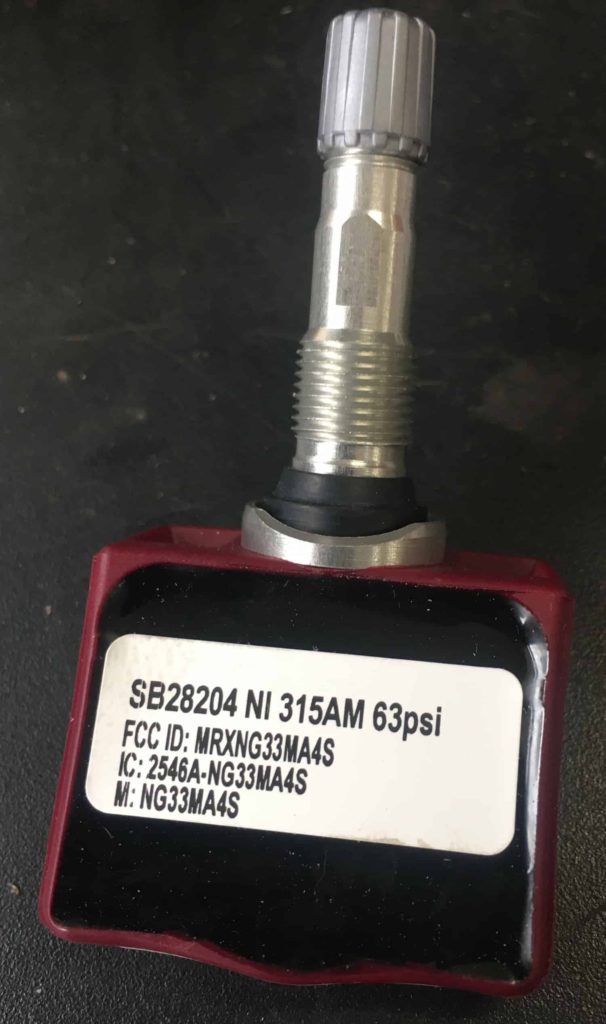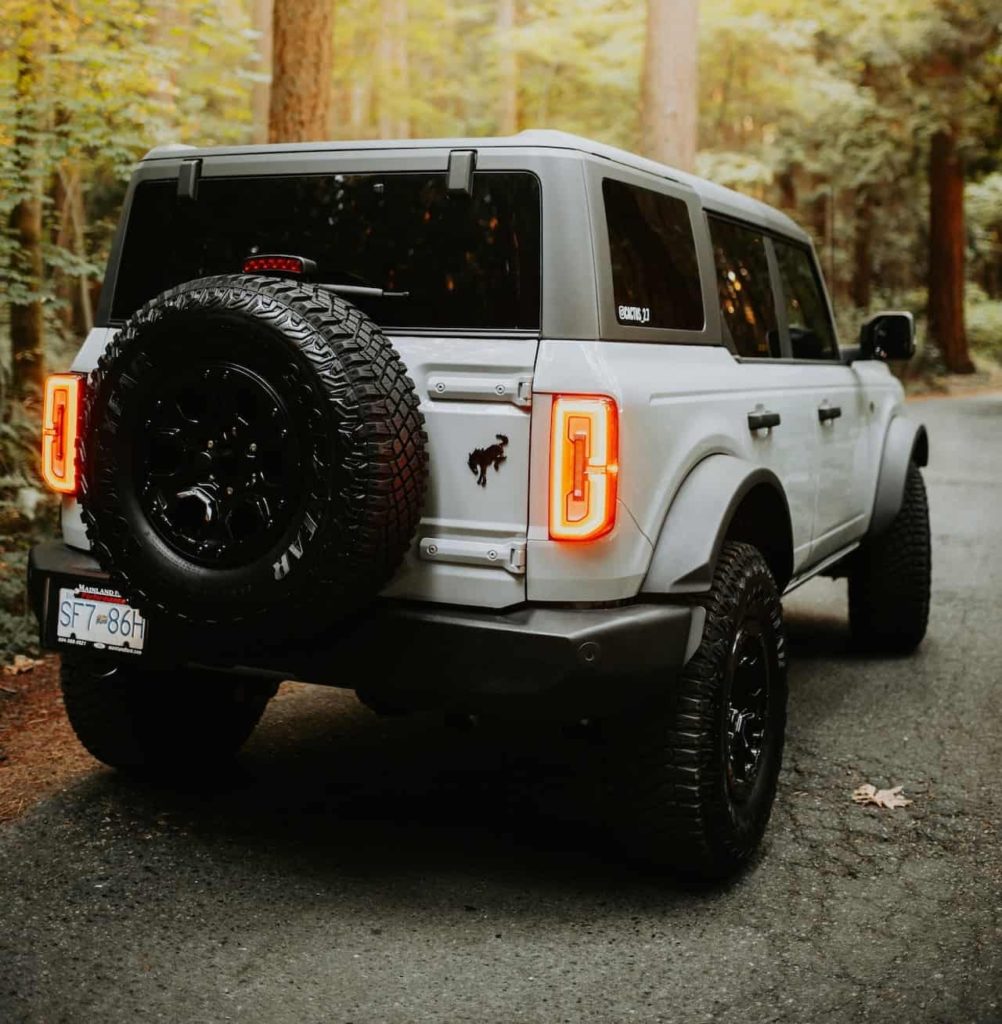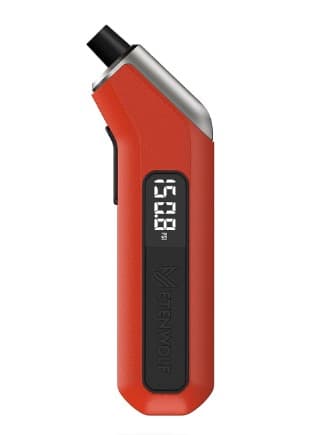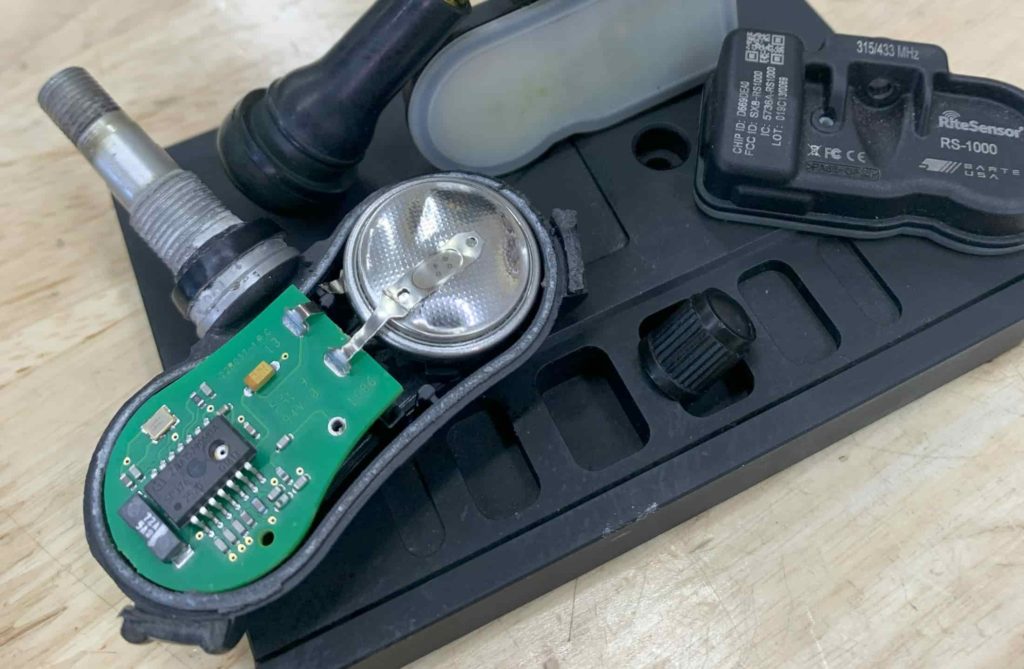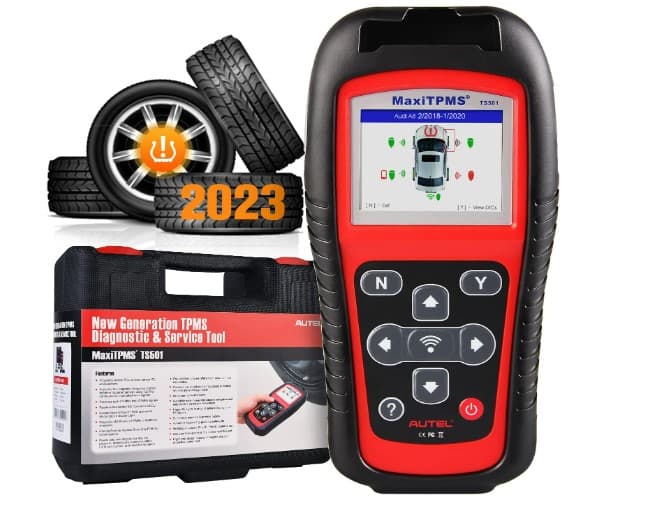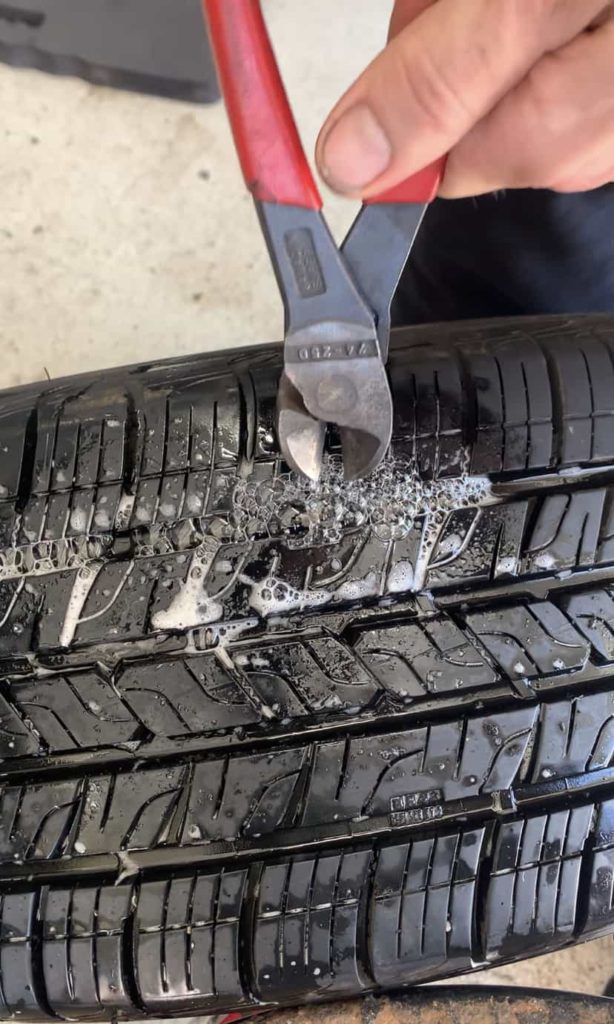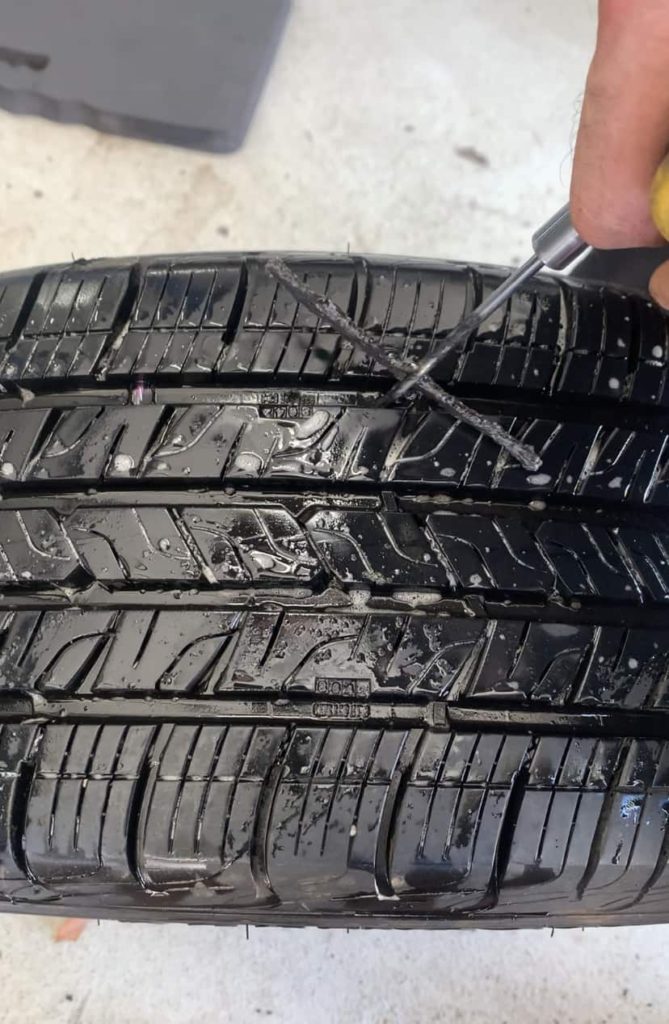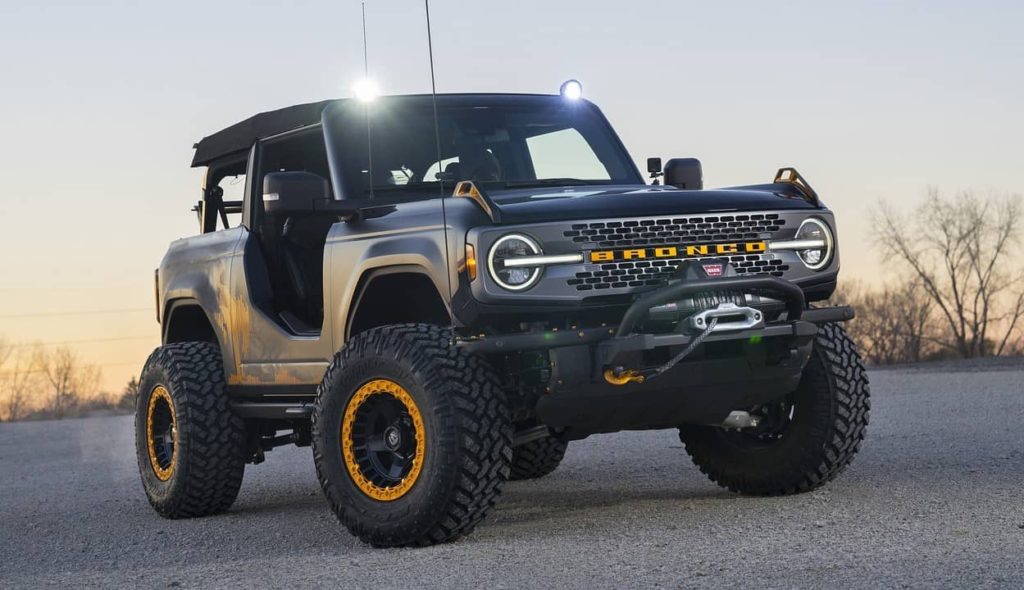What is the Ford Bronco TPMS?
The Ford Bronco tire pressure system exists to alert the driver when there is an issue with tire pressure as well as when the tire pressure system itself is not working properly. The system is made up of tire pressure sensors in each wheel, a TPMS receiver module, and a main computer system called the ECU.
How Does the Ford Bronco Tire Pressure System Work?
Pressure and Temperature Sensors in Tires: Positioned within each tire and connected to the bottom of every valve stem, the sensors constantly gauge both pressure and temperature of the tire they’re in. They are equipped with individual circuit boards and run on battery-operated transmitters.
Wireless Signal Transmission: While driving the Ford Bronco or upon detection of a pressure change, the sensors wirelessly send out data. Ford uses sensors that operate on either 315 Mhz or 433 Mhz frequencies to transmit this information via Radio Frequency (RF) signals. (If you need to replace a sensor, be sure to replace it with the same frequency as the current sensors)
Onboard TPMS Receiver Unit: The receiver module is another circuit board embedded within the vehicle that decodes the wireless signals sent from the tire pressure sensors. After receiving the data, the module relays the data to the Bronco’s ECU or Electronic Control Unit.
Vehicle’s Electronic Control Unit (ECU): This is the vehicle’s central computing system, the ECU processes the received tire pressure and temperature information. The ECU compares the current tire pressure and temperature to the recommended tire pressure for the Ford Bronco. If the tire pressure falls 15-20% below the level recommended by Ford for the Bronco, a warning light is activated.
Dashboard Pressure Alert: Should the ECU find that the pressure in any of the tires falls below the acceptable limit, a dashboard warning light and message will be displayed. The standard low tire pressure light is a yellow or orange exclamation point. Additionally, the Ford Bronco will show a “Low Tire Pressure” message and specify which tire or tires require attention on the information display screen. The tire with low tire pressure will be displayed in orange and the required pressure will be under “Specified”.
Ford Bronco Tire Pressure Light Reset Procedures
Reset Ford Bronco TPMS By Driving
Before making any adjustments, allow the tires to cool to get the most accurate reading.
Check and adjust each tire of the Ford Bronco and set the pressures to the recommended pressure. (Use the tire sticker label on the inside of the driver side door or use the information display)
Once the tires have been checked and adjusted, the Ford Bronco needs to be driven.
Ford recommends driving the Bronco for at least 2 minutes at speeds over 20 Mph.
If there aren’t any faults, the tire light will turn off. (Follow the sensor retraining procedure or scroll down to the diagnosing section if the light does not reset.)
Reset Ford Bronco TPMS By Retraining Tire Sensors
Each tire sensor has a special ID number. The Ford Bronco’s computer (ECU) uses this number to know which tire is where on the SUV. If you rotate the tires, get new tires, or change a sensor, you’ll need to update the sensor positions. To do this for the Ford Bronco, follow these steps in this order:
Before following this procedure, drive the Ford Bronco for a few minutes at speeds over 20 Mph.
Turn the engine and all power to the vehicle OFF.
Turn the key to the ON position or press the push start button twice without pushing on the brake. (Engine Off, power On)
With the Bronco power ON (engine off), press the hazard lights button on and off 3 times within 10 seconds. This basically means press the hazard light button 6 times.
If you’ve completed the first 4 steps correctly, the SUV will go into tire “Reset/Train Mode”, and you’ll hear the horn beep once.
The tire pressure light (yellow exclamation point) will start flashing and a warning message on the information display screen will suggest which tire pressure sensor needs to be trained. (We recommend training all the pressure sensors after any service or if their is an issue)
If the horn does not beep, you are not in training mode. Repeat steps 1-6.
Get out of the SUV and remove the valve cap from the front left tire (driver side front wheel). Gently push the valve stem core in to start releasing air from the tire.
When you hear the horn beep, stop releasing the air.
A single horn beep confirms that the sensor ID number has been learned by the ECU for that wheel position. (front left sensor is now learned as the front left wheel)
Next, move onto the front right tire (passenger side front). Press the valve core and release air until the horn beeps.
Move onto the rear right tire (passenger side rear). Release air until the horn beeps.
Move onto the rear left tire (driver side rear). Release air until the horn beeps.
After completing the training of all 4 tires, inflate all four tires’ pressure back to the recommended cold pressure values.
The information display screen inside the Bronco will say “Training Complete”
Select OK
Drive for a few minutes over 20 Mph.
Retraining Tire Pressure Sensor Tips:
If you hear the horn beep twice during the training process, something went wrong and the entire procedure needs to be repeated.
Perform the tire retraining process at least 3 feet away from other Ford vehicles (or vehicles using TPMS sensors), radio equipment or antenna.
Don’t wait more than 2 minutes between training each tire pressure sensor. (Train one sensor, move onto the next sensor, don’t wait between training sensors)
IMPORTANT: Always perform the sensor training process in the following order: front left wheel, front right wheel, rear right wheel, rear left wheel.
Don’t forget to put the valve caps back on the valve stems to prevent dirt from getting in.
How to Change Ford Bronco Tire Pressure Units
Select Settings on the touch screen display
Press/ select General
Press Tire Pressure Units
Select the unit you want your tire pressure to be measured in by choosing between Psi, kPa, Etc.
How to View Current Tire Pressures
Under the Main Menu on the information display select Gauge Mode
Press the Right Arrow on the steering wheel
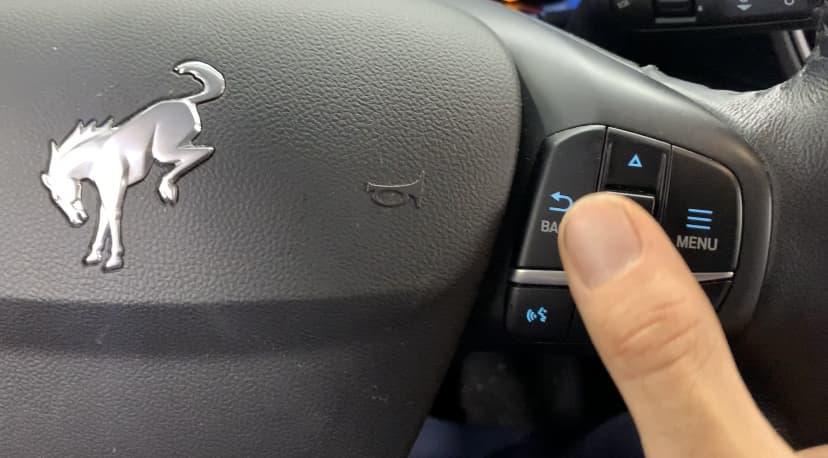
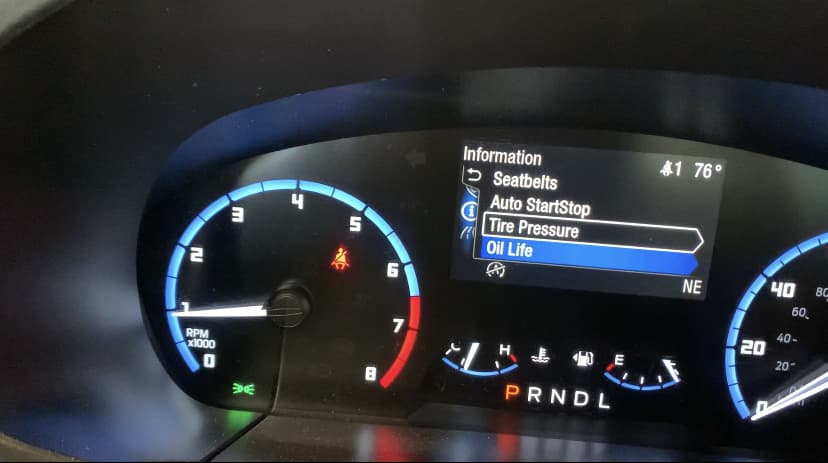
2023 Ford Bronco Recommended Tire Pressure
TIRE SIZE | FRONT PSI | REAR PSI |
255/70R16 | 35 | 35 |
255/70R17 | 35 | 35 |
255/70R18 | 35 | 35 |
265/70R17 | 39 | 39 |
285/70R17 | 39 | 39 |
Hot or Warm Tires
If you drive your Ford Bronco before checking the tire pressure, the tires will be hot. Hot tires will show about 4 Psi more pressure than they actually have. So, if a hot tire reads 35 Psi, it’s really 31 Psi when cold. This is why checking the tire pressures when the tires are cold is the only way to get an accurate reading.
What Will Cause the Ford Bronco Tire Pressure Light to Turn On?
Under-inflated tires
Over-inflated tires
Tire losing pressure
Absence of pressure sensor in wheel (like driving with the spare on)
Malfunctioning or battery-drained tire sensor
Defective TPMS receiving unit
Interference from nearby Ford cars or electronic devices
Changes in weather or elevation
Excess load on the vehicle
Driving with tire chains
Ford Bronco Tire Pressure Sensor Batteries
Each Ford Bronco wheel has its own tire pressure sensor, which runs on a special silver-oxide battery. The sensor’s circuit board is directly connected to the battery and is encased in a plastic container. Because of how it’s made, you can’t just change the battery; you have to replace the whole sensor. Ford TPMS sensors usually last between 5 to 10 years or up to around 100,000 miles.
Diagnosing A Problematic Tire Pressure Light
If the Ford Bronco’s tire light is on, something’s wrong. It could be low air in a tire or a sensor not talking to the car’s computer properly. If you’ve tried resetting the tire pressure and retraining the sensors but the tire light is still on, here are 6 more things you can try:
Solution 1: Is One or More Tires Losing Air Pressure?
If the Ford Bronco’s tire light is on, the first thing to find out is if one or more tires are losing air from a leak. To check, follow these steps:
Measure the pressure in all tires to find the one that’s low.
Pump up the low tire to the right pressure.
Drive faster than 20 mph for about 3 minutes.
If the light turns off but comes back on later, (right away, hours, or days later) you likely have a leak in that tire. Now that you know which tire is the problem, go to solution 6 to find where the leak is coming from.
Solution 2: Disconnect the Battery to Erase DTC's from Ford Bronco ECU
Every time the tire light comes on in your Ford Bronco, the SUV’s computer (ECU) keeps a record, known as a Diagnostic Trouble Code (DTC). To clear these codes, you can manually reset the ECU. First, make sure the SUV and all its electronics are off (radio, lights, etc.). Then open the hood and disconnect the negative terminal of the 12V battery. Wait a bit and then reconnect it. The Bronco will go into a “relearning” setting. We suggest driving for about 30 minutes at a constant speed of 50 Mph afterwards. Note: If the low tire pressure light turns off after reconnecting the battery but then turns back on while or after driving the Bronco, it typically means that one or more tires have a faulty or low battery tire pressure sensor, or your tire simply has a leak.
Solution 3: Identify the Malfunctioning Tire Pressure Sensor
If you think one or more tire sensors are low on battery or not working, you can check each one with a TPMS diagnostic tool. I’ve used different kinds of these tools and they all work the same way. First, plug the tool into your Ford Bronco’s OBD2 port. Then hold the tool near the valve stem of the front left tire. Select the “test” or “trigger” option on the tool and wait for it to respond. Do this for all four tires and see what the tool says. If any sensor reports a “low” battery, doesn’t register on the tool, or doesn’t connect to the tool at all, you need to replace that sensor.
Solution 4: Awaken a Dormant Pressure Sensor
If you’ve tried retraining the tire sensors on your Ford Bronco and some still aren’t working correctly, you can try waking up a “sleeping” pressure sensor. First, let about 15 Psi of air out of the tire that’s giving you trouble. Just press the valve stem core gently. Wait a bit and then fill the tire to 5 Psi over the recommended pressure. So if the tire should be at 39 Psi, go up to 44 Psi. Then drive for a couple of minutes going faster than 20 mph. After that, stop and set the tire pressure back to where it should be. Finally, drive a little more, keeping your speed over 20 mph, to finish the job.
Solution 5: Tire Light Intermittently Activates and Deactivates
Every time you start your Ford Bronco after it has been idle for a while, the tires are categorized as “cold,” and this could result in a minor drop in tire pressure. Depending on where you live and how cold it gets at night, this fluctuation is often sufficient enough to set off the low-pressure warning indicator. As you drive and the tires heat up, the pressure tends to rise which may in turn deactivate the warning light once it gets to a certain pressure. To fix this issue, we suggest examining and inflating the tire pressure when the tires are cold. This is the only way to ensure a precise pressure measurement and help prevent the tire warning light from continuously toggling on and off.
Solution 6: Locate the Source of Tire Deflation
If you’ve determined which tire is leaking air, there’s a simple technique to locate the source of the leak. You’ll require four things: a spray bottle, soap, water, and a tire inflator. First, inflate the tire that’s low on air to at least 35 Psi. Next, add some soap to the spray bottle and then fill it with water to make a nice soapy solution (a product like Windex also works great). Spray and soak the tire with this soapy concoction, ensuring you cover its entire surface, including the valve stem. After the tire is fully soaked, carefully examine it for the emergence of tiny bubbles. The presence of these bubbles will reveal where the leak is. Find the bubbles and you’ve found the leak!
Understanding Tires
Does Air Temperature Affect the Ford Bronco Tire Pressure?
Air temperature can have a significant impact on the tire pressure of a Ford Bronco. During colder weather the molecules inside the tire contract which leads to a decrease in internal pressure. The tire pressure can drop enough for the tire light to turn on. In hot weather when the tires heat up from being driven on, the opposite happens and the tire pressure increases. A general guideline suggests that for each 10-12 degree Fahrenheit shift in temperature, you can expect a corresponding 1-2 Psi change in tire pressure.
How to Check Ford Bronco Tire Pressure
Digital Tire Pressure Gauge: Use a digital tire pressure gauge to get the most accurate readings.
Check Manufacturer’s Guidelines: Always adjust the tire pressure to what the Ford Bronco recommends. If the front tires require 35 Psi, set them to exactly 35 Psi.
Prep the Tires: Ensure the tires are “cold,” meaning the car has been parked for at least three hours or driven less than a mile to get the most accurate reading.
Remove Valve Cap: Take off the valve cap from the tire you’re checking first. Don’t lose it!
Insert Gauge: Firmly press the tire pressure gauge onto the valve stem. The gauge will display the current pressure level in Psi on the screen.
Compare and Adjust: Match the current reading with the recommended pressure from Ford’s guidelines. Add air with an air pump if the pressure is low, release air by pressing in the valve stem core if the pressure is too high.
Double-Check: After adjusting, re-measure the tire pressure with the gauge to ensure it’s at the optimal level.
Replace Valve Cap: Securely screw the valve cap back onto the valve stem.
Repeat for All Tires: Follow steps 4-8 for each of the remaining tires. Don’t forget to check the spare!
NOTE: The Ford Bronco spare tire does not have a tire pressure sensor in it. Driving with the spare on will cause the tire light to turn on and stay on.
Why is Correct Tire Pressure Important in the Ford Bronco?
Maintaining the appropriate tire pressure in the Ford Bronco is crucial as it helps the tires operate at a cooler temperature, extends their lifespan, and enhances fuel efficiency.
Safety: Driving on incorrect tire pressure decreases vehicle stability, traction, and handling, increasing the risk of accidents or issues.
Fuel Efficiency: Correct tire pressure can improve gas mileage, saving you money on fuel costs over time. Getting an extra few miles per gallon goes a long way.
Tire Longevity: Maintaining the right pressure levels minimizes uneven tire tread wear which extends the lifespan of your tires.
Reduced Environmental Impact: Better fuel efficiency means fewer emissions and less tire tread wear means less tire waste both greatly contributing to a smaller carbon footprint.
Common Tire Pressure Questions
Is it Safe to Drive the Ford Bronco With the Tire Light On?
If your Ford Bronco tire light turns on, pull over, examine the tire, and check the tire pressure. The tire light is on for a reason and usually means it isn’t safe to keep driving. To actually know how safe it is to drive with the tire light on, you must determine why the tire light is on. After diagnosing the tire issue and knowing what triggered the tire light, then you can decide if it is safe to drive.
Why is the Ford Bronco Tire Light Flashing?
The tire light will blink if any of the tire pressure sensors lose connectivity or cease communication with the Ford Bronco’s TPMS receiver module or ECU, commonly known as a TPMS malfunction indicator. For instance, if you’re driving with the spare tire on, this can trigger a TPMS malfunction because the spare tire lacks an internal tire pressure sensor and leaves the TPMS receiver module without data to process. A similar malfunction occurs when the battery in a tire pressure sensor is low or dead and causes it to stop interacting with the TPMS receiver module. This means when the tire pressure light is flashing or blinking, it’s a Ford tire pressure monitoring system issue and not a tire pressure issue.
Is a Tire Plug a Dependable Solution for Repairing Punctures?
Indeed, tire plugs are highly dependable for repairing punctured tires and can often last for the tire’s entire lifespan. I’ve applied tire plugs to both my own vehicles and those of customers and I’ve experienced no issues. It’s crucial, however, to only use tire plugs on the tire’s tread.
Aftermarket Tires and Wheels
If you decide to upgrade the tires and wheels on the Ford Bronco, be sure to either swap the tire pressure sensors from the OEM wheels into the new wheels or buy a second set of programmable tire pressure sensors. Find out which frequency the sensors you currently have (either 315 Mhz or 433 Mhz) and replace them with sensors that use the same frequency.
Everything in this article is applicable to all 2021-2024 Ford Bronco models and versions including the Ford Bronco 2.3L, 2.7L, 3.0L EcoBoost, Bronco Sport Big Bend, Heritage, Free Wheeling, Outer Banks, Badlands, Black Diamond, Wildtrak, Everglades, Heritage Limited Edition, and Bronco Raptor.
Please note that this blog post contains Amazon affiliate links. This means that if you make a purchase through one of these links, we at TPMSRESET.COM may earn a small commission at no extra cost to you. We only recommend products that we personally use and believe in. Thank you for supporting us.

